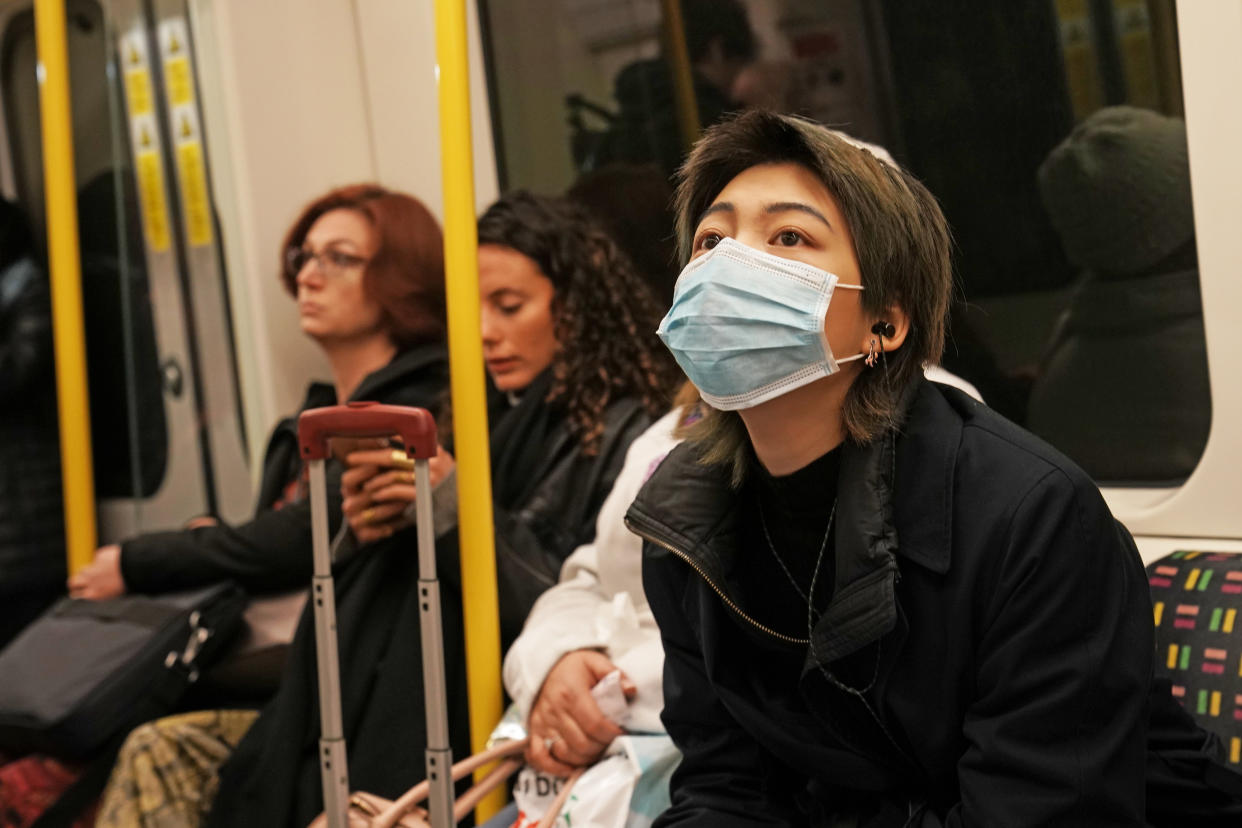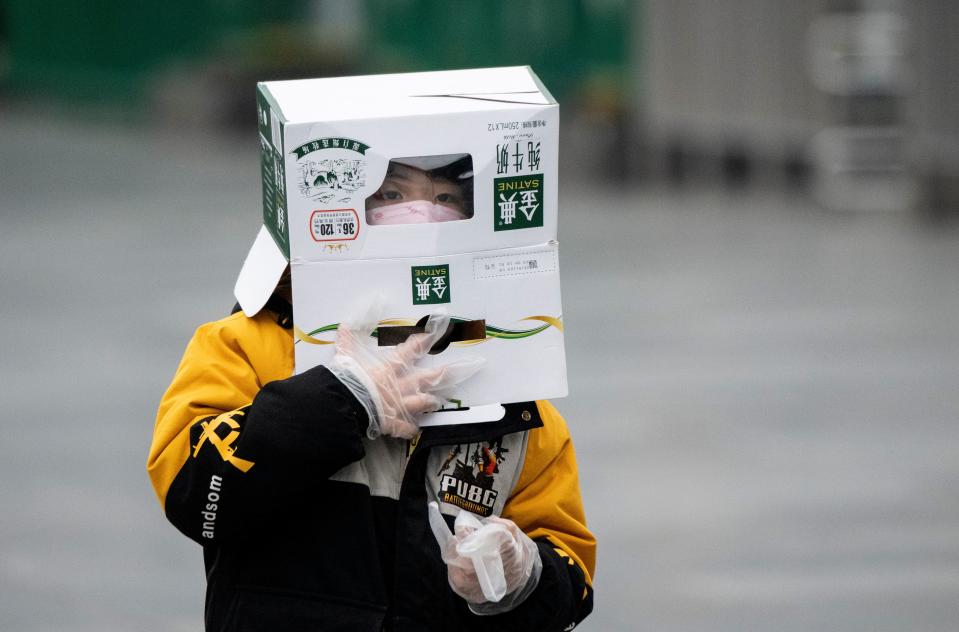How is the coronavirus Covid-19 diagnosed?

Deaths from the coronavirus Covid-19 have spiked, with more victims succumbing to the infection on Wednesday than any other time of the six-week outbreak.
Since the virus emerged at a seafood and live animal market at the end of last year, it has spread well beyond its epicentre in the Chinese city Wuhan.
Now in at least 27 other countries, authorities have confirmed more than 60,300 cases, of which 59,822 are in mainland China.
While cases have been rising steadily since the start of the year, incidences took a sharp increase over the past 24 hours.
Read more: When is coronavirus Covid-19 expected to 'peak'?
Mainland China had 44,700 confirmed cases on 12 February, increasing to 59,800 the following day, John Hopkins University data shows.
The death toll exceeded 1,350 on Thursday, with 242 fatalities recorded in the province Hubei - of which Wuhan is capital - the day before.
Hubei officials are using a broader criteria to diagnose patients, leading to more being told they have the infection.
The same case definition is not being applied in the rest of China, throwing “trend mapping into chaos”, the BBC reported.

How is the coronavirus Covid-19 diagnosed?
Doctors in Hubei province are reportedly classing people as “definitely infected” if they present with tell-tale symptoms, alongside a CT scan showing a chest infection.
Covid-19’s initial symptoms are vague and flu-like, such as fever, cough and breathlessness.
In the most severe cases, patients develop pneumonia.
This also causes cough and breathing difficulties, as well as a rapid heartbeat, sweating and shivering, and chest pain.
Before this change to diagnosis, patients were confirmed via a nucleic acid test.
Nucleic acids are substances in living cells, making up the “NA” of DNA.
Suspected patients had respiratory secretions tested for a specific nucleic acid sequence known to be in the Covid-19 virus.
Speaking of the change to the diagnosis method, Professor Paul Hunter - from the University of East Anglia - said: “This does not change anything about trajectory of the epidemic. It is solely an administrative issue.
Read more: Coronavirus Covid-19 raises fears it may 'spread via faecal matter’
“This will effectively have moved most of the previously suspected cases into confirmed case.
“I have no problem with people using different case definitions but it would be great if they could be consistent, or if they do change, run both in parallel for a few days so no one believes the epidemic has suddenly got a lot worse”.
A study by Central South University in Changsha, Hunan province, may explain why Hubei officials changed how they diagnose patients.
Scientists found five out of 167 patients initially tested negative for Covid-19 via mouth swabs, despite showing symptoms of infection.
CT scans flagged probable pneumonia, noticeable via inflamed alveoli (air sacs) in the lungs filled with fluid or pus.
Repeat mouth swabs later came back as positive for Covid-19.
“This suggests a small number of patients may show signs of lung infection prior to a positive identification of virus in mouth swabs,” said Professor Mark Harris from the University of Leeds.
According to the Centers for Disease Control and Prevention, “In the early stages of infection, it is possible the virus will not be detected”.
It adds, however, “a negative test for a sample collected while a person has symptoms likely means [Covid-19] is not causing their illness”.
The World Health Organization (WHO) claims “lower respiratory specimens likely have a higher diagnostic value than upper respiratory tract specimens”.
It recommends “lower respiratory specimens such as sputum, endotracheal aspirate or bronchoalveolar lavage be collected for [Covid-19] testing where possible”.
Sputum is a mixture of saliva and mucus coughed up from the airways.
Endotracheal aspirate samples involve placing a tube into a patient’s windpipe via the mouth or nose. This is usually done to help them breathe and can identify pathogens in the airways.
Bronchoalveolar lavage are collected via a bronchoscopy, a narrow tube that goes down the windpipe and into the airways in the lungs.
In simple terms, saline fluid is squirted into a small part of the lung.
It is then suctioned out and analysed for the virus.
Read more: Coronavirus officially named Covid-19
If collecting these samples is “not possible”, the WHO recommends testing for “upper respiratory tract specimens”.
This can be carried out via a swab from the back of the nose and throat, as well as in the mouth.
If initial tests come back negative but the patient is “strongly suspected” to have Covid-19, the WHO stresses they should be “resampled and specimens collected from multiple respiratory tract sites”.
Blood, urine and stool samples could also be tested to determine if the virus has been shed “from different body compartments”.
Suspected patients may include those with tell-tale symptoms who have recently been to China or were in contact with a confirmed Covid-19 sufferer.
The virus’ “incubation period”, time from infection to symptoms, is unclear.
Reports claim it can take up to 14 days for infected people to become unwell, however, the general consensus is symptoms appear after around five days.

What is the new coronavirus Covid-19?
Most of the people who initially became unwell worked at, or visited, the Wuhan market.
While no one can say for sure where the virus came from, bats seem most likely.
The nocturnal creatures are thought to have been behind fellow coronaviruses severe acute respiratory syndrome (Sars) and Middle Eastern respiratory syndrome (Mers).
Scientists from Peking University in Beijing suggested snakes may have been the “intermediate host” for Covid-19.
A team from South China Agricultural University have since found it could have “jumped” from bats to humans via pangolins.
If pneumonia sets in, the lungs struggle to draw in air, resulting in reduced oxygen in the bloodstream.
“Without treatment the end is inevitable,” said the charity Médecins Sans Frontières.
“Deaths occurs because of asphyxiation.”
The US Centers for Disease Control and Prevention has warned there is no specific treatment for coronaviruses.
Pneumonia is generally caused by bacteria, which tend to respond to antibiotics.
Professor Peter Horby, from the University of Oxford, claimed there is “no effective anti-viral” for Covid-19, with treatment being “supportive” while the immune system fights the virus.



